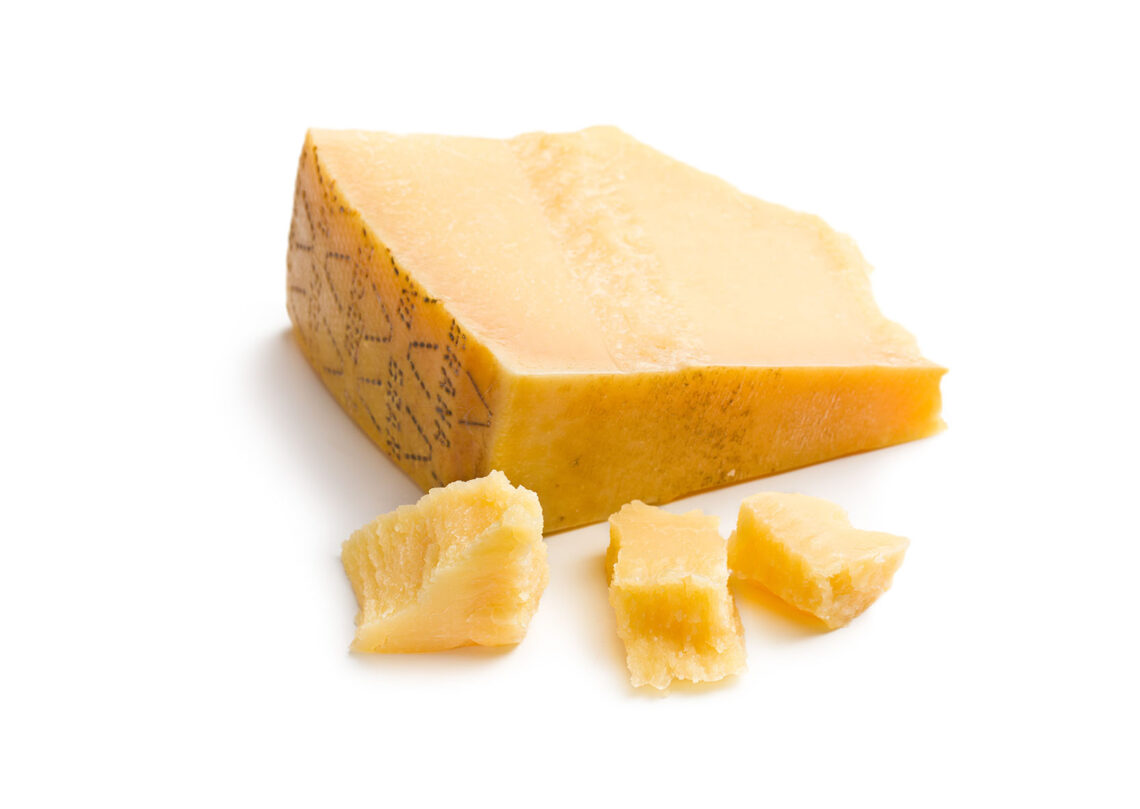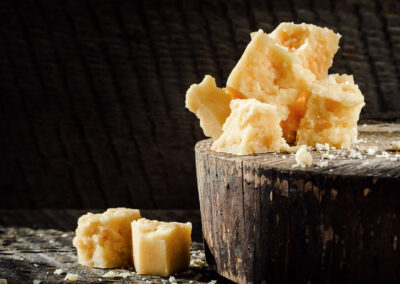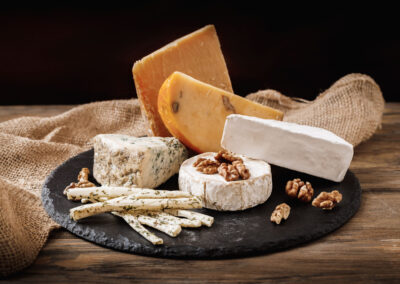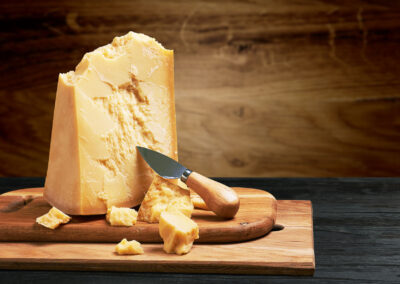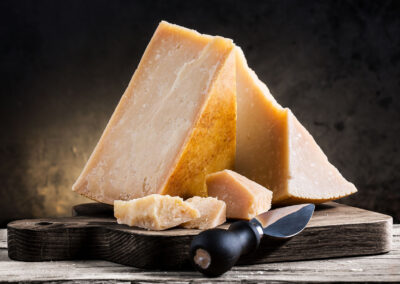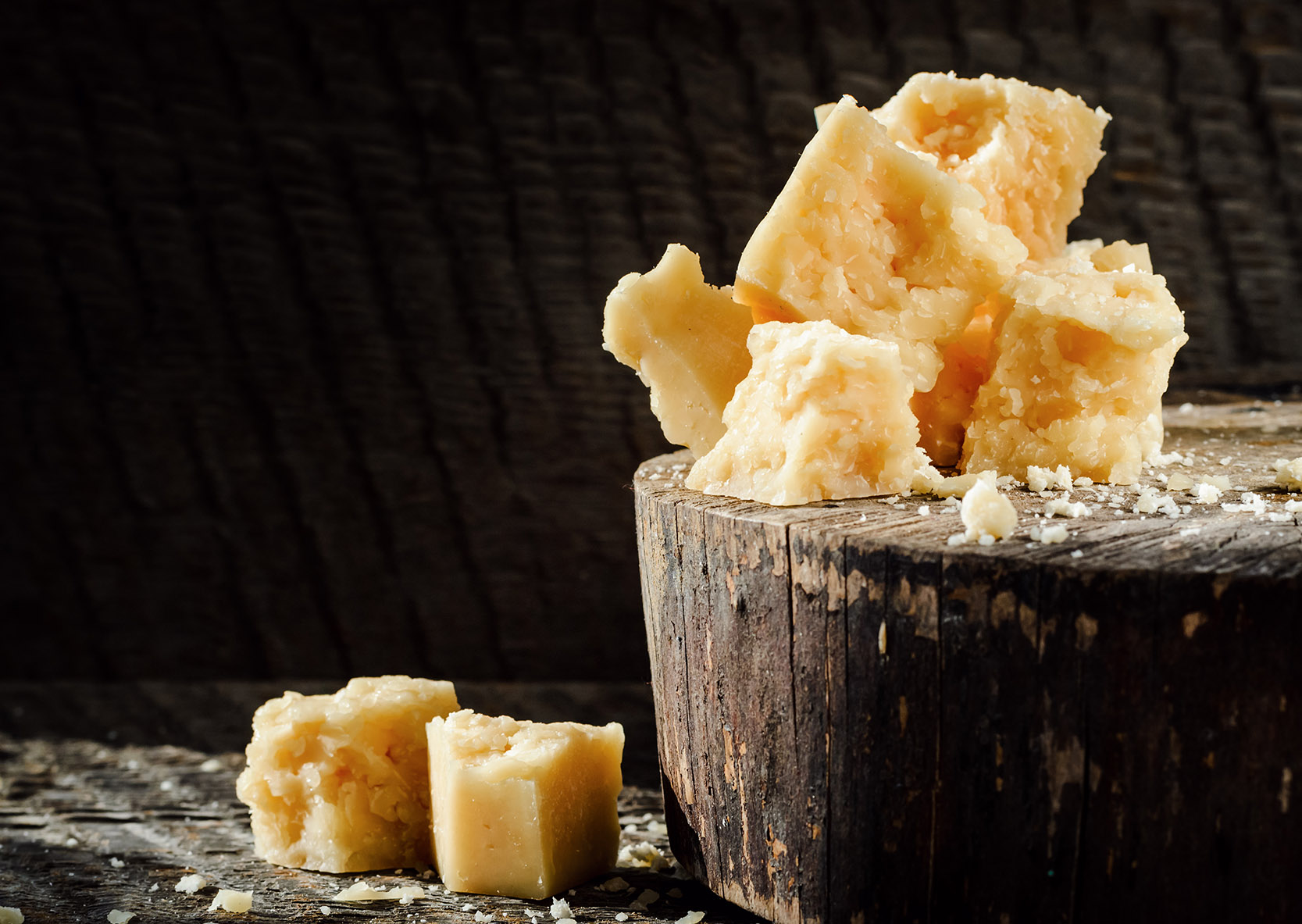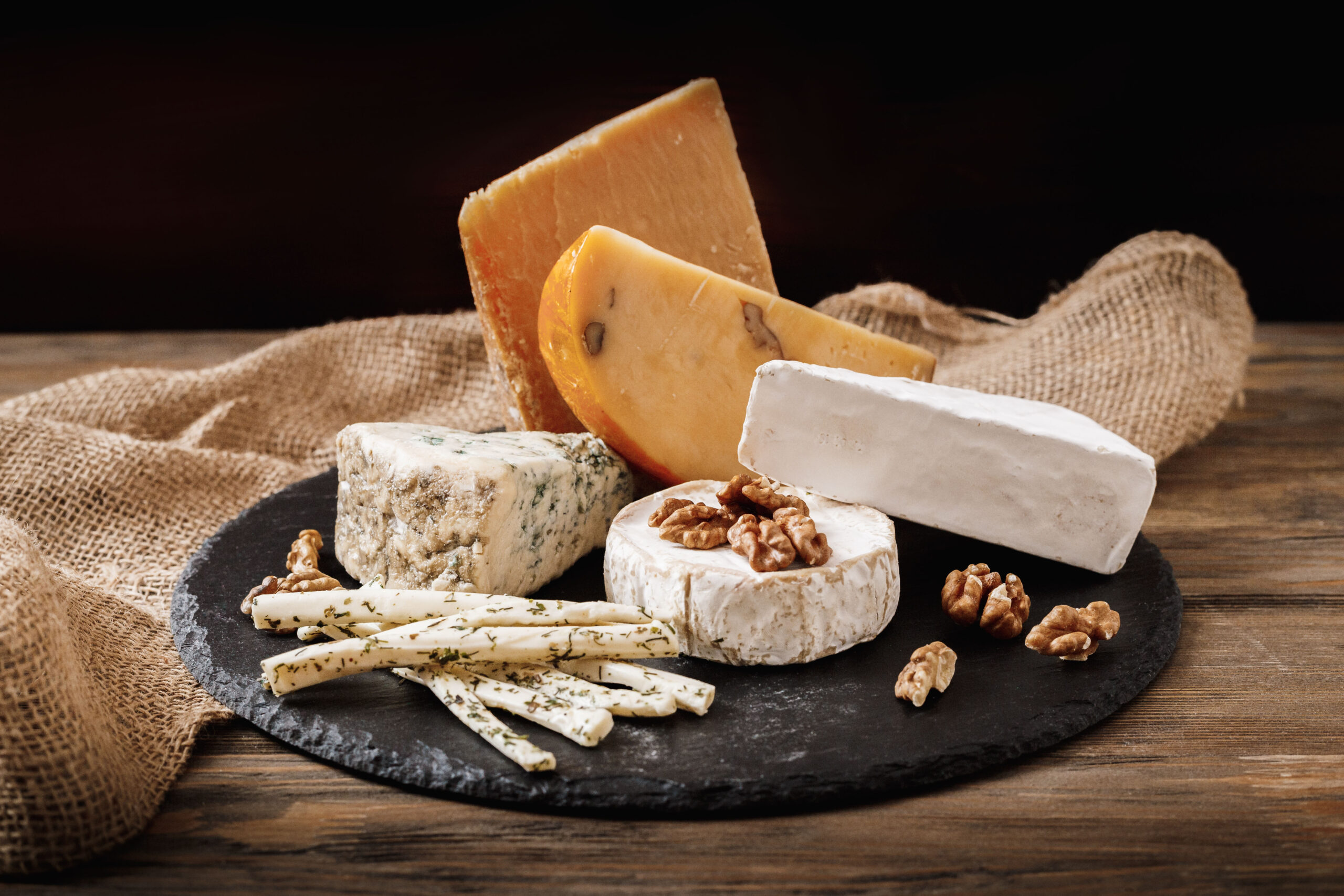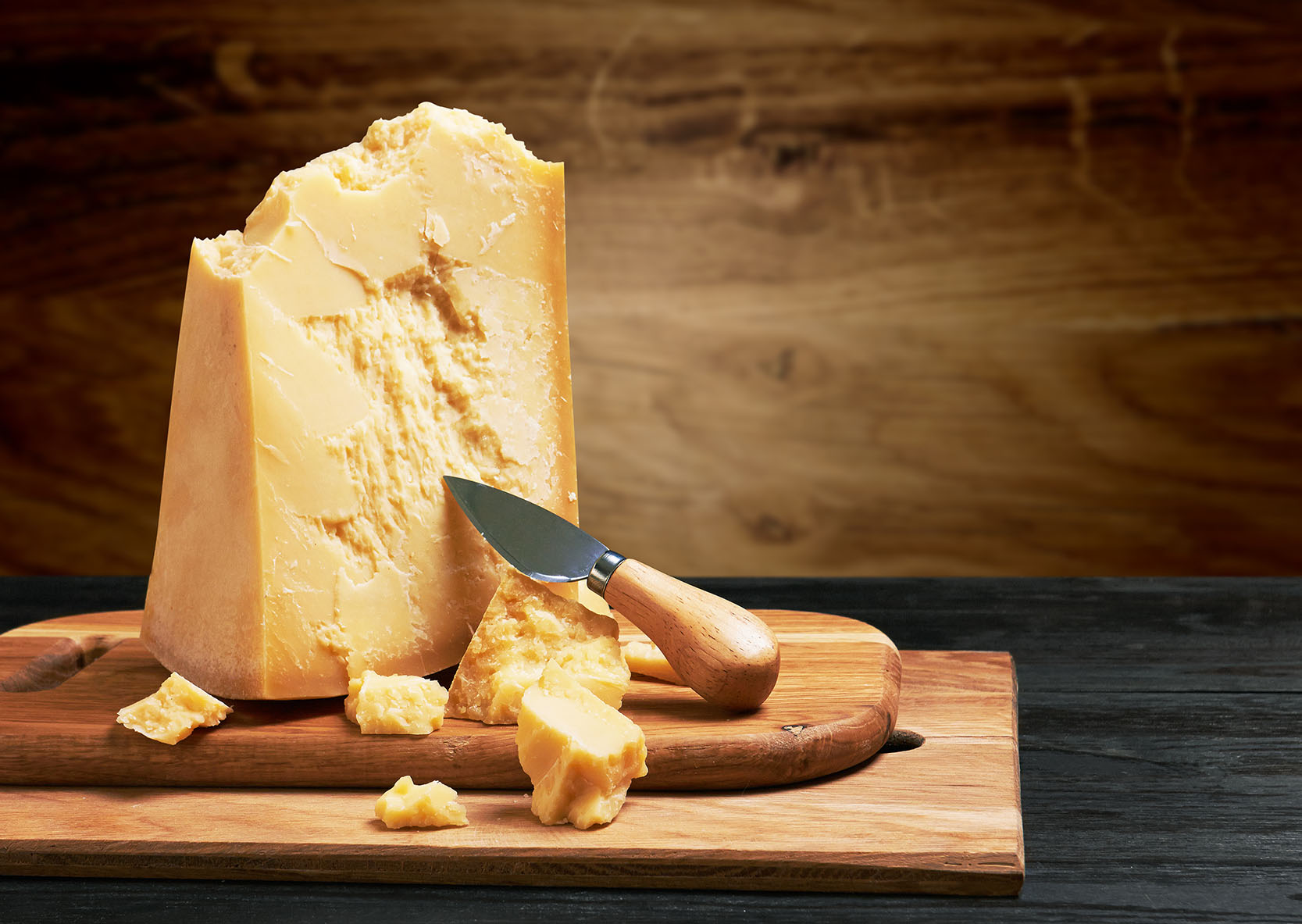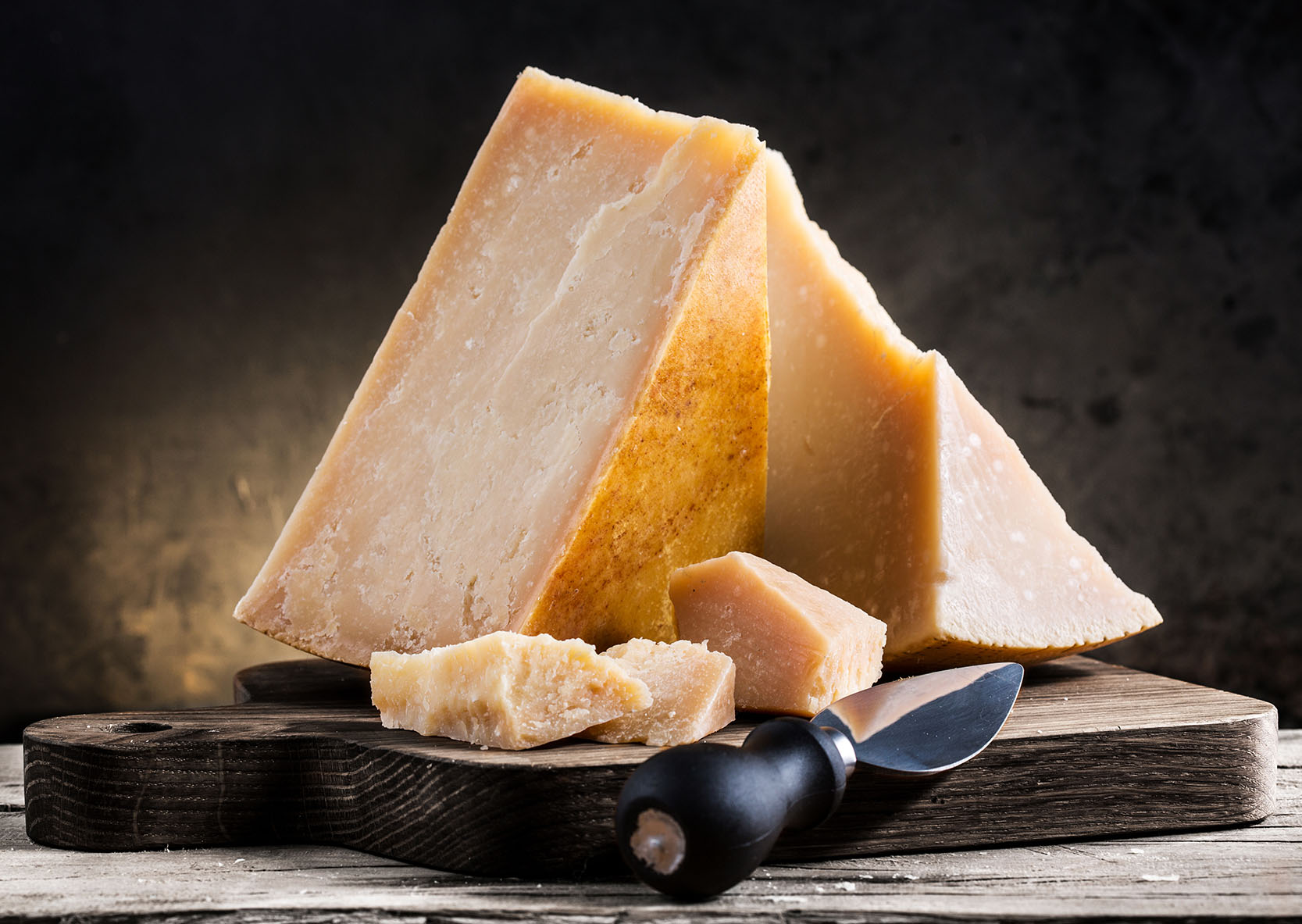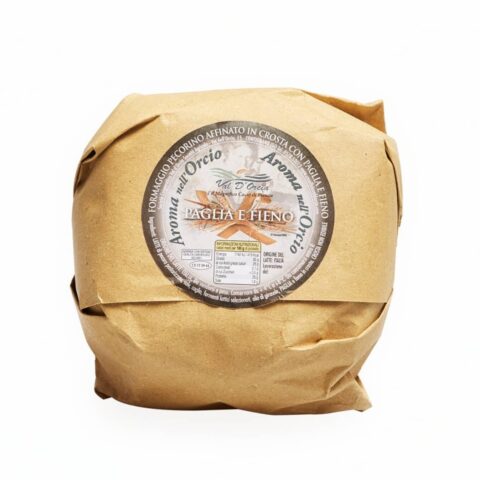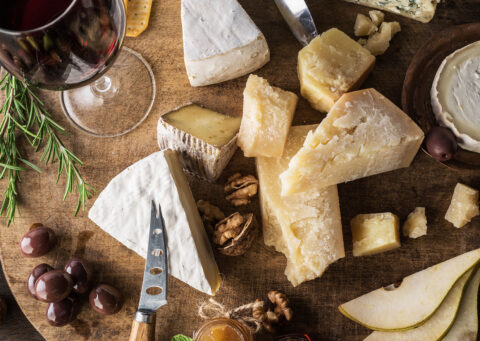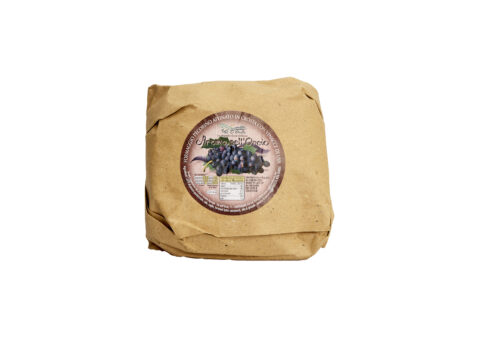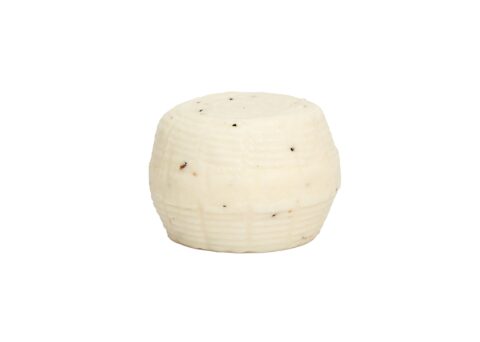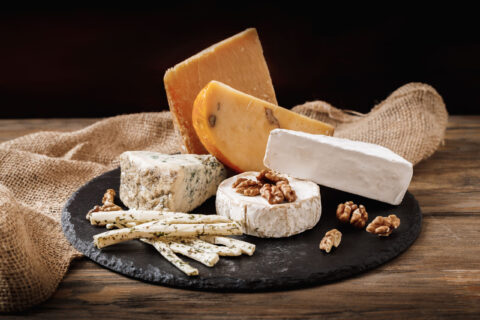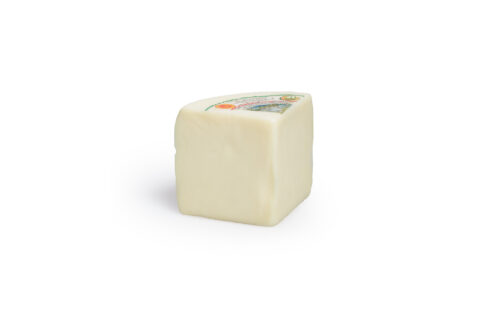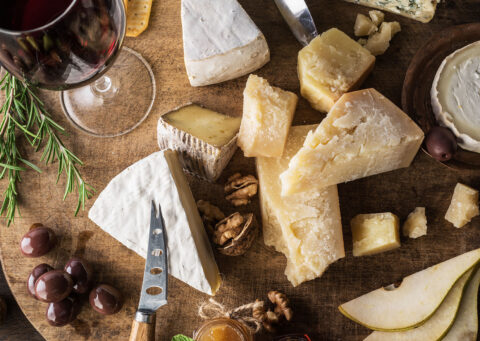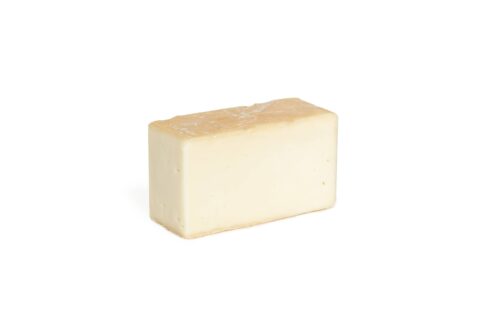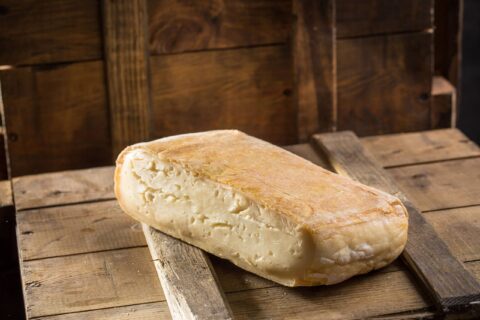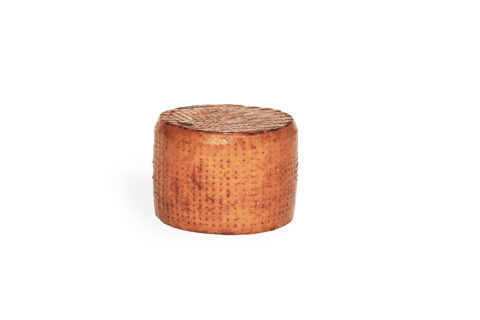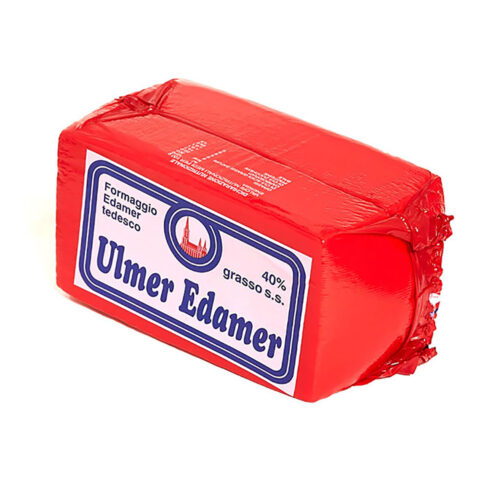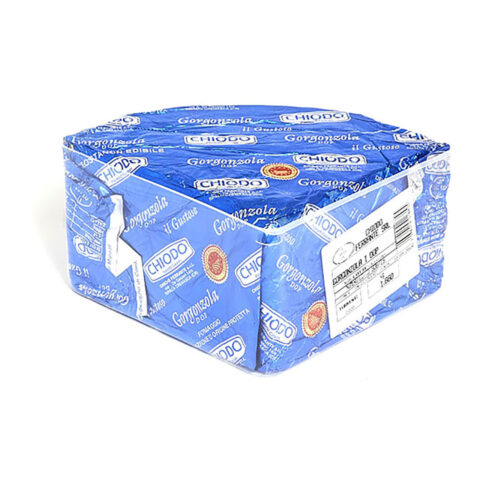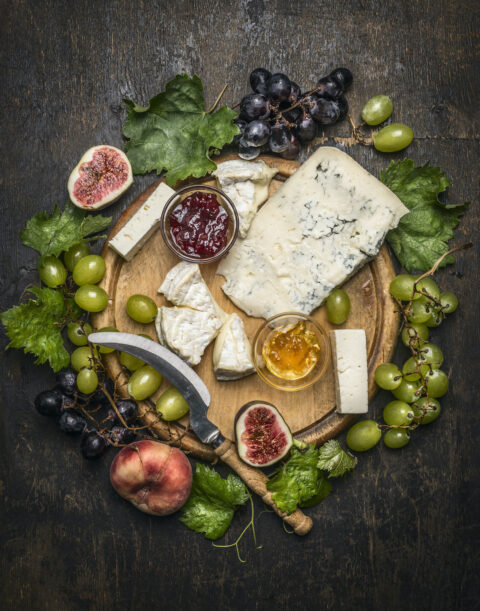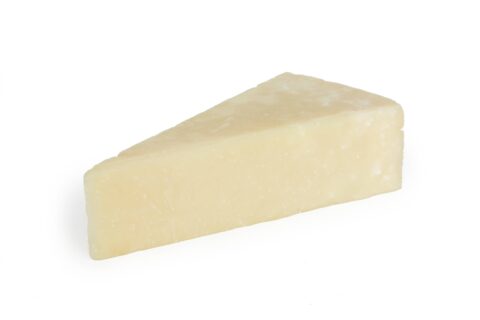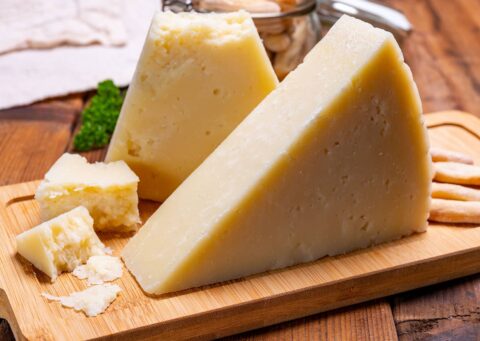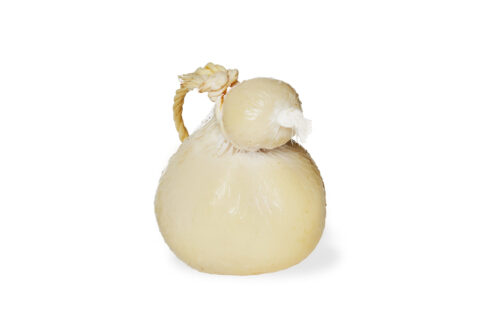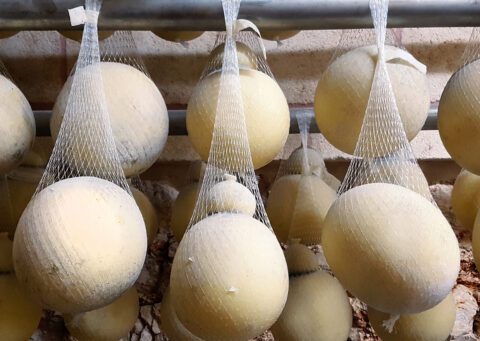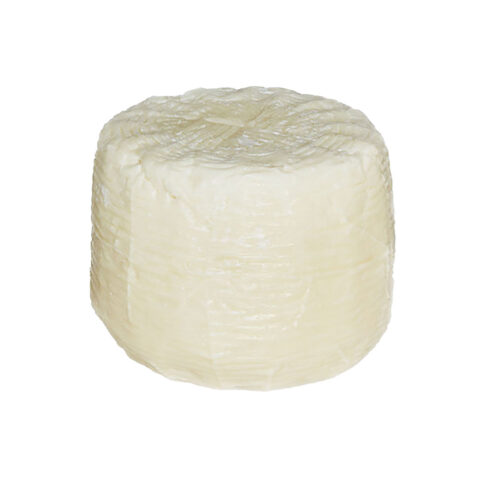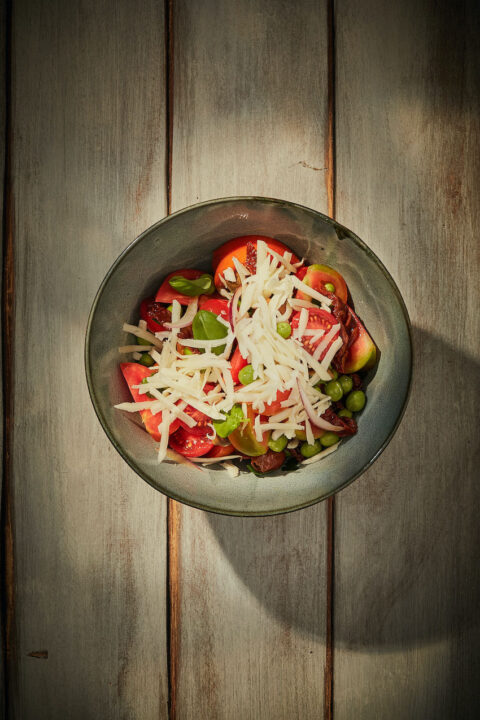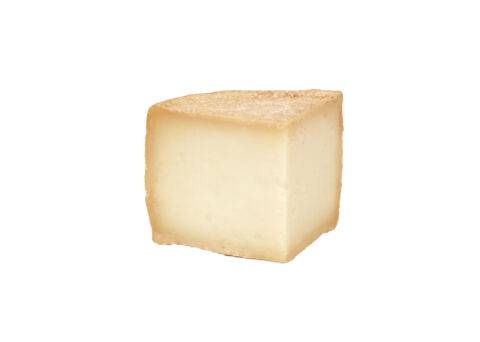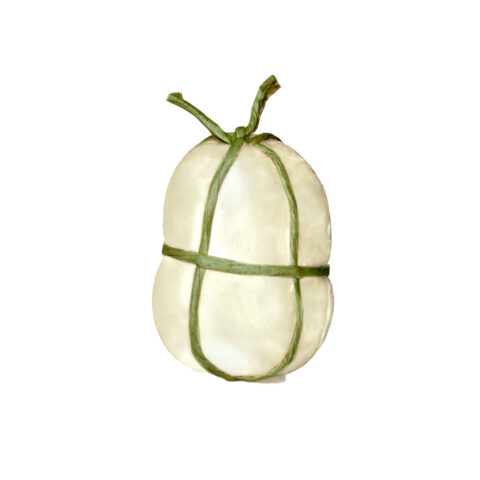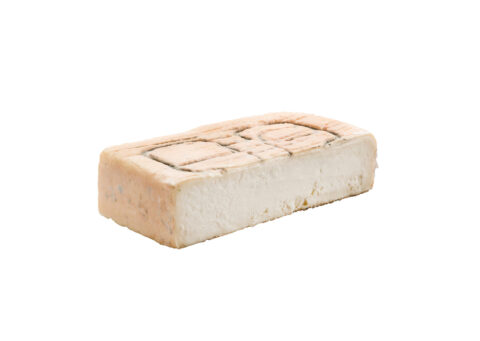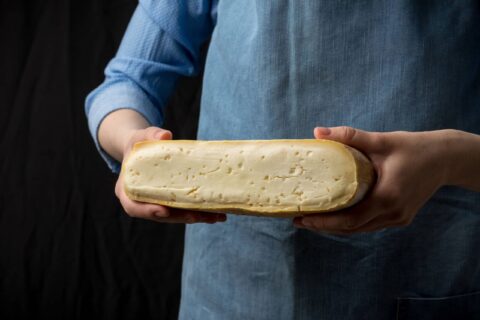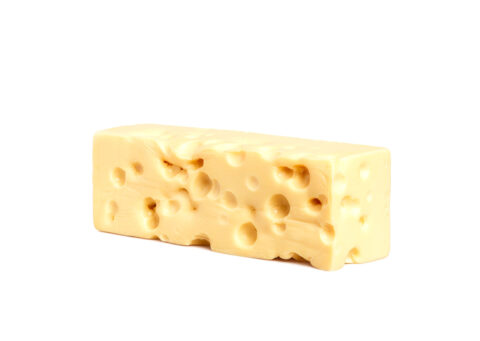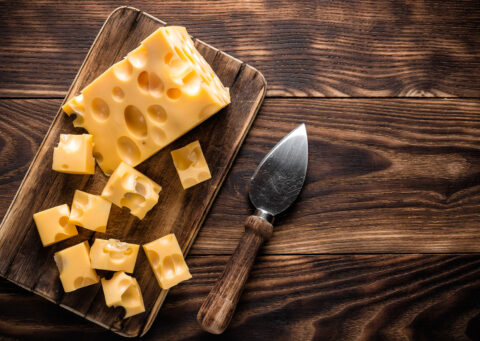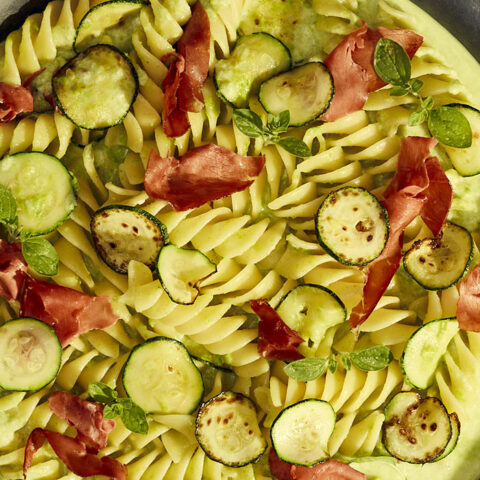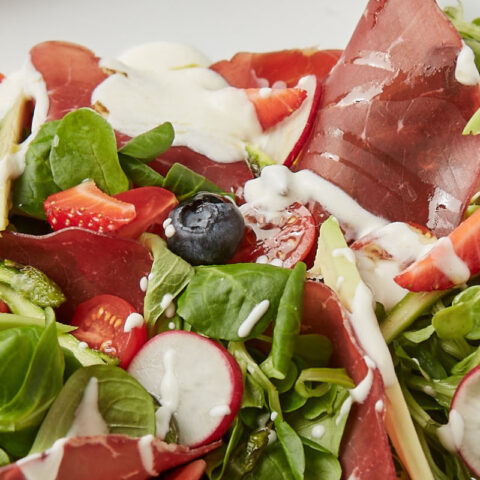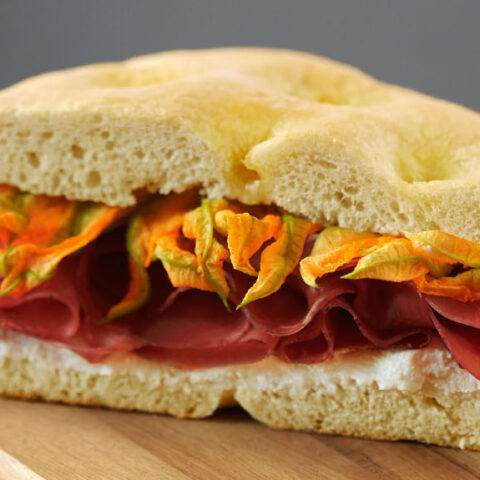Clean a zucchini, cut it into small pieces and boil it in salted water. At the end of cooking, drain the zucchini and put it in the bowl of the minipimer adding oil, a cup of cold water and blend until it becomes a cream. Keep it aside. Cut the remaining zucchini into...
GRANA PADANO PDO
€27,90
FAST SHIPPING
SAFE PAYMENTS
Grana Padano PDO is an Italian cheese produced in the area of Po Valley in Northern Italy. It is a hard, cooked-paste cheese, slowly ripened and produced exclusively with raw cow’s milk from strictly controlled farms.The rind of Grana Padano PDO is hard, smooth, thick and characterised by a straw or brown colour. The paste is hard, grainy and straw-coloured.
Grana Padano PDO has a cylindrical shape with flat faces and is generally quite large in size: its diameter goes from 35 to 45 cm, reaching a height of around 18-25 cm and a weight that ranges from 25 to 40 kg. It has a fragrant aroma, while its taste is delicate and sweet.
Ingredients
Milk, salt, rennet. Preservative: lysozyme (from egg)
Ingredients
Milk, salt, rennet. Preservative: lysozyme (from egg)
Food expiration
Conservation tips
NUTRITIONAL VALUES
RELATED PRODUCTS
PROCESSING STAGES
The PDO Certification (Protected Designation of Origin) allows Grana Padano cheese to be produced throughout the whole year uniquely using raw cow’s milk from the production location established by the rules. Grana Padano PDO is strictly connected to the territory in which it is produced, the raw materials and the experience employed. Its unique and distinctive flavour is the result of the local traditions that keep on being followed and passed on. In fact, Grana Padano PDO is produced according to a centuries-long method that has never changed in time and still gives this cheese the aspect and organoleptic features that made it famous all over the world. The milk used for producing Grana Padano PDO come from cows whose nutrition is constantly controlled and are milked twice every day. The milk is poured in a copper boiler that can contain up to 1000 litres from which are produced two moulds also called “twin moulds“. Natural whey and calf rennet are added to the milk in the boiler to make it coagulate. Once the curd has been cooked, it stays in the boiler for at least 70 minutes. Then, it is divided into two moulds, each covered with a linen cloth and taken out of the boiler. After, the moulds are marked with the identification number of the dairy factory, the acronym of the province, the date of production and the symbol of the Grana Padano Protection Consortium.
After being marked, the moulds are salted, dried and ripened. This phase must last for at least 9 months and must take place in controlled rooms with a temperature ranging from 15ºC to 22° C degrees. It is important to remember that it is mandatory that all phases of production are carried out in the area of origin.
HOW TO ENJOY IT BEST
Grana Padano PDO is excellent to eat raw, cut into flakes or to grate on pasta and stuffed pasta. It is also great for an aperitif on a charcuterie board served with cured meats and other delicacies. If aged up to 12 months, it is perfect with white wines with a strong aroma and texture. On the other hand, if the ageing period is longer, it is excellent paired with red wines. Sparkling wines are perfect with any type of maturation.
HISTORICAL NOTES
The origins of Grana Padano PDO date back to around the year 1000, when the Cistercian monks had to find a solution for the over production of milk. To solve this problem, they began to produce a hard cheese, the caseus vetus, which was later called Grana. Over time, the production of Grana Padano achieved a successful outcome supported by a real commercial network. Nowadays, Grana Padano PDO is produced in thirty-two provinces of the following Italian regions: Lombardy, Piedmont, Emilia-Romagna, Veneto and Trentino.
COOKING TIPS
Bresaola with fruit and vegetable salad
For asparagus Cut the asparagus into julienne strips. Place them in a bowl and add 1 tablespoon of extra virgin olive oil, the juice of half a lemon, salt and mix. For the dressing In a bowl add the low-fat yogurt, 1 tablespoon of extra virgin olive oil, salt and...
Focaccia with bresaola, zucchini flowers and goat cheese
Mix flour and beer, and dip the zucchini flowers in the batter. In the meatime, heat oil in a deep pan and, once it has reached the temperature of 180°, place the battered zucchini flowers in it. Once they start to golden, take them out and place them on absorbing...
